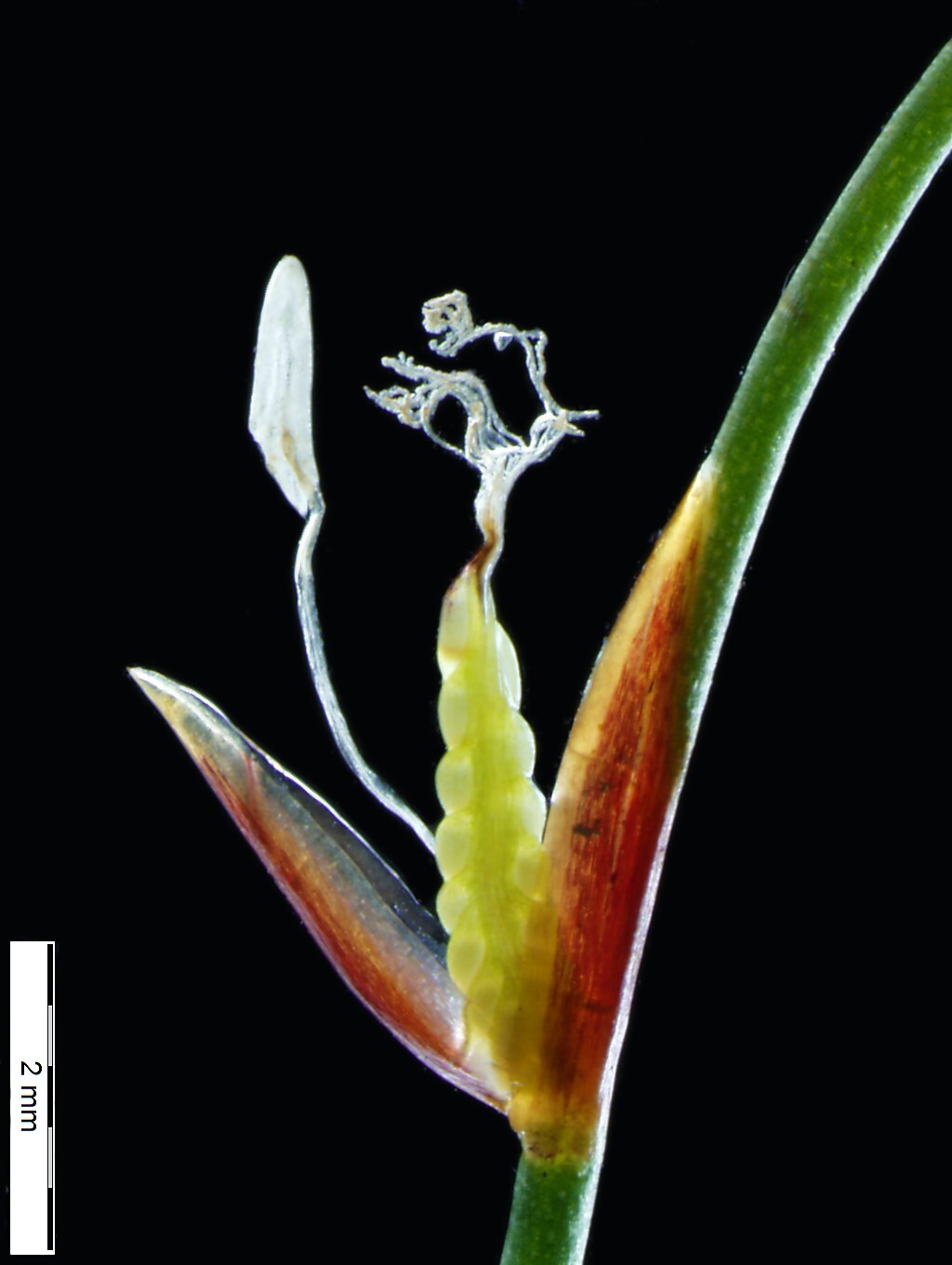Centrolepis polygyna
(R.Br.) Hieron. Wiry CentrolepisLeaves 2.5–12 mm long, ± recurved, glabrous. Inflorescence borne on an axis (5–)15–45 mm long, hence flowers held above the leaves, except axis up to c. 5 mm long and sometimes included amongst the leaves in depauperate plants; bracts glabrous. Lower bract with a broad brown, papery basal sheath 3–4 mm long, abruptly narrowed into a terete (very fine), ± recurved lamina (3–)5–8(–10) mm long. Upper bract 3–4 mm long, sheathing at base, broad, brown and papery; lamina not distinct from sheath; apex acute. Inflorescence units 1 per head-like cluster. Stamens 1, fused at base to each axis bearing carpels. Carpels 6–14 in subopposite pairs; styles c. 1.5 mm long, fused together at base only. Flowers mostly Sep.–Dec., less commonly to Mar.
LoM, MuM, Wim, GleP, VVP, VRiv, RobP, GipP, OtP, WaP, Gold, CVU, GGr, DunT, NIS, WPro, OtR. All states. Locally common on damp, clayey or sandy and often saline soils.
The reduced form of this species is difficult to distinguish from C. cephaloformis. However, C. polygyna has a narrower head-like inflorescence, bracts which become brown, and its habit is never compact like that of C. cephaloformis.
Conn, B.J. (1994). Centrolepidaceae. In: Walsh, N.G.; Entwisle, T.J., Flora of Victoria Vol. 2, Ferns and Allied Plants, Conifers and Monocotyledons, pp. 190–196. Inkata Press, Melbourne.
 Spinning
Spinning



